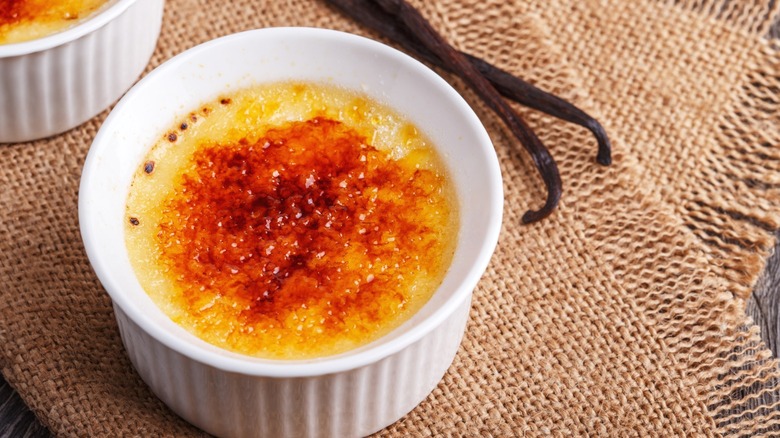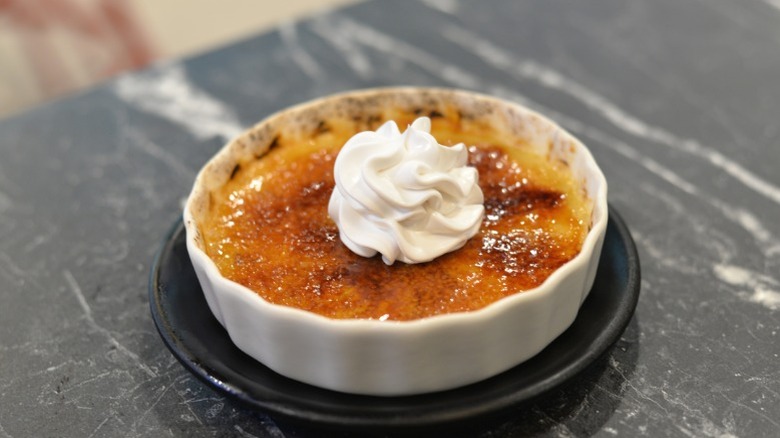Why Ramekin Size Matters When Making Crème Brûlée
Crème brûlée may be a little tricky to make — almost as tricky as typing out all three of those accent marks yourself, as opposed to copy-pasting the whole phrase from another tab — but we'll be darned if it isn't rewarding. Atop a sweet, decadent custard base, a layer of burnt sugar offers a deeper, more complex flavor, not to mention the opportunity to whack the top with a spoon and watch it crack like thin ice. But what receptacle should you use for a dessert like this? A ramekin, of course, but what size? We asked Chloe Hammond, the head chef of a rehab center in the United Kingdom called the Asana Lodge, and she tells us that a shallow ramekin is your best bet.
"I tend to use shallow ramekins that hold around 120/150ml," Hammond says. "The wider surface area means you get that lovely ratio of silky custard to caramelized sugar topping." If you have something smaller or less shallow, that's okay, but Hammond will warn you that they "change the whole eating experience," as "the classic appeal of this dessert is all about that delicate crunch meeting smooth custard in one spoonful." Of course, you're in charge of your own crème brûlée experience, and if that's a trade-off you're willing to make, you can go right ahead.
Ramekin size can affect the cook time of your crème brûlée
The eating experience isn't the only thing affected by the size of your crème brûlée ramekin: as Chloe Hammond tells us, it can also make your dessert cook faster or slower. "Shallow ramekins cook faster because the custard layer is thinner, so heat penetrates more quickly and evenly," she explains. "Deeper ramekins take longer, which increases the risk of the edges overcooking before the center sets." This is the same principle as to why sheet pans are long and flat rather than, say, shaped like a giant brick.
Other crème brûlée concerns depend upon context. "If you've got uneven heat" in your oven, Hammond says, "shallow ramekins can help reduce hot spots." (If you have a sous vide machine, you can use that to make crème brûlée, too.) Who you're cooking for also makes a difference, as making a dessert for a larger group is much different from making individual portions for a tasting menu. In any case, however, you can give it your best shot at home — and you don't even need to use a torch, no matter how fun it may look.

